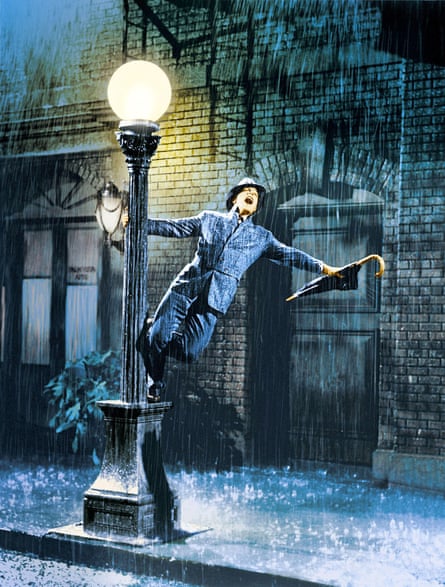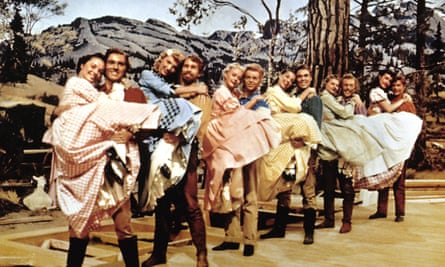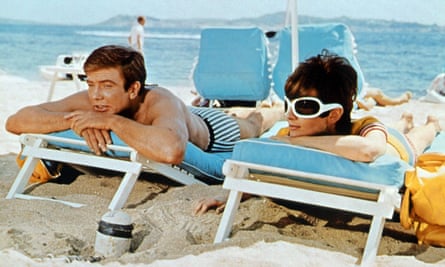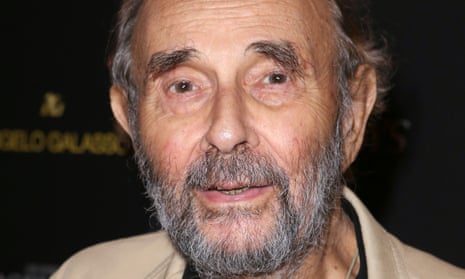In 1998, Stanley Donen, the director and choreographer of classic musicals such as Seven Brides for Seven Brothers, Funny Face and, with Gene Kelly, Singin’ in the Rain, was presented with an honorary Oscar by the Academy of Motion Picture Arts and Sciences. He was in his 70s but, in the way of many former dancers, could have passed as much younger.
As part of his witty, modest thank-you, he did a little flourish of tap. It was possibly the last significant live act by anyone from the great age of Metro-Goldwyn-Mayer musicals, and now that Donen has died, aged 94, only the films remain.

For decades Donen was overshadowed by Kelly. Everyone recognised him as one of the two great dancers of the musical, an inventive, athletic, artistically ambitious and rather domineering figure. Donen deferred and said only that they made a grand team.
But then, take the title number of Singin’ in the Rain, 1952. “He puts his umbrella down and lets it rain on him,” Donen said, “and he’s singing in the rain because he’s in love and the girl he loves loves him too. He’s a happy man, being a child.”
And of course, Kelly did the dance, and likely Kelly the choreographer made up his own splashy moves. But then, in the middle of the number, the camera lifts and soars a few feet on a crane. While no one can spell out that effect, the exhilaration and the rising are vitally connected. And Donen decided to do that, just as he was there every step of the way with Kelly.
Born in Columbia, South Carolina, the son of Mordecai Donen, who managed women’s clothing stores, and his wife, Helen (nee Cohen), Stanley had a normal enough life until, at the age of nine, he saw Fred Astaire in Flying Down to Rio. “I didn’t know what I wanted to do, or be, or be around, or be with, or relate to, or anything. I just knew that there was something about the magic of the movies and, in particular, Fred Astaire and music that galvanised me.”
His father proved understanding. He started taking Stanley with him on his business trips to New York for the fashion shows and they caught up on musicals in the evenings. At the age of 16, Stanley left high school and his father gave him ticket money to New York where he got a job in the chorus of Pal Joey (1940-41). Kelly was playing the lead.
Kelly, from Pittsburgh, was 12 years older than Donen, and he would say later that he felt like a father to the teenager from the south. The next year, Donen helped Kelly do the choreography on Best Foot Forward (1941) – first on stage, then on screen.
By the time Donen was 18, he was choreographing the “alter ego” number in the film Cover Girl (1944) – the one where Kelly dances with himself. “In my naivety,” said Donen, “I told [the crew] that there was a way to do it because … Gene was such a precise dancer he would land at exactly the right position at the right moment in sync with the music.” The film’s director, Charles Vidor, said the scheme was crazy. But the studio boss, Harry Cohn, asked Kelly, “Do you think this young man knows what he’s talking about?” And Kelly said: “I’m sure he does.”
This was the start of Donen’s reputation as a terrific dance technician: he went on to do the sequence in Anchors Aweigh (1945), in which Kelly dances with the cartoon mouse, Jerry; and he was the director on Royal Wedding (1951), in which Astaire seemed to dance up the walls and across the ceiling of a room in one shot – a scene that was later paid homage to by Lionel Richie in his video for Dancing on the Ceiling, which Donen also directed. But despite that virtuoso skill, Donen was by instinct a choreographer who loved to put dances in real settings.
At Metro in the 1940s, Donen choreographed several films culminating in Kelly’s Take Me Out to the Ball Game (1949), a film directed by Busby Berkeley. He and Kelly then co-directed On the Town (1949), as much of a breakthrough on film as Oklahoma! had been on stage. With music by Leonard Bernstein, it set numbers in actual locations in New York City, such as on Brooklyn bridge and Rockefeller Plaza.
Seven Brides for Seven Brothers (1954) was Donen’s idea, and many reckoned it crazy: a musical about Oregon backwoodsmen looking for wives. The studio let Donen, who directed it solo, do it his way but for one thing – they would not agree to filming in northern Oregon in winter.

After Singin’ in the Rain and It’s Always Fair Weather (1955), the partnership between Donen and Kelly ended. They had increasingly argued, and it became “a struggle. It was not a great romp.”
There was another factor. It was in the Kelly house (one of Hollywood’s more important social gathering places in the 40s and 50s) that Donen had met Jeanne Coyne, the dancer whom he married in 1948 and divorced in 1951, and who would become Kelly’s second wife, in 1960.
After breaking with Donen, Kelly did only one more screen musical – the very personal, rather ballet-like Invitation to the Dance – whereas Donen directed the exquisite Funny Face (both 1956), a sweet romance and a tribute to Paris, plus a revelation of what Audrey Hepburn could offer as well as a showcase for the mature Astaire. Few musicals provide more emotional satisfaction.
After that, Donen filmed two Broadway hits at Warner Brothers – The Pajama Game (1957) and Damn Yankees (1958). The former is terribly neglected, undeservedly so, and not just because of its clever use of Doris Day’s energetic sincerity, but because of its range – from the large open-air number, Once-a-Year Day, to Carol Haney’s Steam Heat (the dances were designed by a relative newcomer, Bob Fosse – a measure of Donen’s eye for talent).

By 1960, the Metro musical was no more and Donen had to adapt to changing times. Increasingly based in Europe, he became an accomplished director of comedy, romance and spoof thrillers, such as Indiscreet (1958), with Cary Grant and Ingrid Bergman, The Grass is Greener (1960), the huge hit Charade (1963), with Grant and Hepburn, Arabesque (1966) and Two for the Road (1967). The last of these was possibly his most heartfelt picture, about the changing stages of love and marriage, a film with Albert Finney and Hepburn, who were sufficiently seemingly miscast to make the central concept work.
Then came Bedazzled (1967), a fascinating collaboration with Peter Cook and Dudley Moore, Staircase (1969), The Little Prince (1974), the dire Lucky Lady (1975) – Donen’s only really bad picture – Movie Movie (1978) and Blame It on Rio (1984), his last feature film. Love Letters (1999), starring Laura Linney and Steven Weber, was made for TV.
Donen was a modest man, quieter by far than Kelly and never himself a brilliant dancer. However he excelled at collaboration, which musicals, more than any other film genre, are reliant on, and which enabled him to create masterpieces. Even with his solo-credited Funny Face, it was Donen who blended the talents of Astaire, Hepburn and Kay Thompson with those of the costume designer Edith Head, the Gershwins and the photographer Richard Avedon, whom Astaire’s character was modelled on, and who advised Donen.
“Nothing is more fun than finding someone who stimulates you, and who can be stimulated by you,” Donen said. “The result, rather than just adding up to two and two, multiplies itself, and you find yourselves carried away on the crest of excitement.”
Donen was married and divorced five times, including to the actor Yvette Mimieux (his fourth wife) and finally, Pamela Braden. He is survived by his partner, the writer, director and actor Elaine May; by a son, Joshua, from his second marriage, to the actor Marion Marshall (another son from that marriage, Peter, died in 2004); a son, Mark, from his third marriage to Adelle Dillingham; three grandchildren; and a sister, Carla.
Stanley Donen, choreographer, director and producer, born 13 April 1924; died 21 February 2019

Comments (…)
Sign in or create your Guardian account to join the discussion